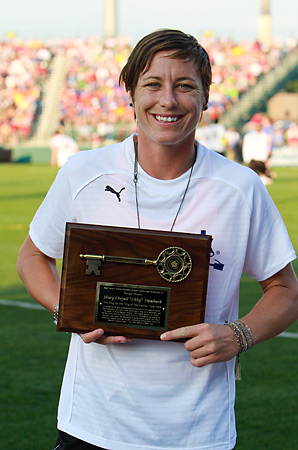WPS needs investment, not just growth in fans and media coverage


Countless pundits have wondered aloud whether or not the incredible attention the U.S. women's national team has received can be translated to Women's Professional Soccer (WPS). The extremists have had their say. Women's soccer faithful talk about the sport "arriving" after such a glorious Women's World Cup run in which the U.S. fell just short, losing to Japan in a captivating final. On the other hand, mainstream media conditioned to think soccer -- let alone women's soccer -- is an inferior sport will continue to think that it's a waste of time.
But the answer to whether or not the World Cup will have a sustained effect on WPS lies somewhere in between. The short answer is "not really" but that is because the wrong questions are being asked.
Most see attendance and media coverage as the two primary barometers of success for WPS. Both are certainly important for gauging public perception of the league, but most critical to the league's sustainability is increased investment in the form of sponsorship and committed ownership.
Sure, the heart-stopping, captivating road that the U.S. took has sparked momentary interest in the sport, to the tune of Wednesday's homecoming match between magicJack and the Western New York Flash drawing 15,404 fans on Wednesday night in Rochester, N.Y. That's a league record for a non-doubleheader crowd, providing tangible evidence of the bump the Women's World Cup has already brought WPS.
True, it was also Abby Wambach's homecoming and the stature of the typically modest self-described "B-List Rochester celebrity" has now been elevated to national icon and local immortal. In fact, July 20, 2011 was declared "Abby Wambach Day" as most of those fans were also there to see Wambach, who grew up in Pittsford, a Rochester suburb.
However, the crowd also erupted when Flash forward Alex Morgan entered the game in the 72nd minute and cheered for Western New York superstar Marta, who was cast as the villain against the U.S. during the World Cup. Both are positive signs for a Flash team averaging just 2,056 fans per game in home matches not involving Wambach.
Wednesday's match was historic for WPS; a watershed moment. But anyone expecting that level of attendance or media interest to sustain beyond the current high from the Women's World Cup is highly optimistic. Interest in women's soccer is very much cyclical and event-driven, just like all of the other non-mainstream sports. Americans live for big events, so when a U.S. team displays remarkable fighting American spirit in international competition, it'll inevitably capture the hearts of the entire U.S.
However, on a week-to-week level, that interest is likely not constant or sustainable. The league's hope is that some of those 15,404 fans in Rochester on Wednesday (and what's expected to be increased crowds in Atlanta and Boston this weekend) will be willing to come back again. If so, that would see WPS' average attendance reach a higher level than it was before the Women's World Cup.
"We found that that almost exclusively everyone loves the product we have, it's just getting them to come back," Western New York Flash owner Joe Sahlen said before Wednesday's match.
Retention of fans will be critical to the health of WPS, but to focus solely on that would neglect the more important long-term stabilizer: investment.
Currently with WPS crowds averaging about 3,000 per game this season, there's not a whole lot of appeal to most sponsors or investors. What the Women's World Cup -- and the dramatic run made by the U.S. -- provides is a platform to display what this sport could be at its peak.
That's how the league can sell WPS to potential investors looking to join, retain sponsors and attract new ones that have been enticed by the recent buzz. League officials said that there have been dramatic increases in both expansion and sponsorship discussions since the U.S.' dramatic quarterfinal penalty kick victory over Brazil on July 10. Without this long-term investment, WPS won't succeed. The Washington Freedom's strong 10-year history (dating back to WUSA days) and a relatively large fan base did not keep the team from being sold off and moved to Florida. A well-supported Chicago Red Stars team could not overcome investors pulling out (and a taxing rent at Toyota Park) and the team had to drop down to the amateur WPSL for 2011.
There's still very much a novelty effect surrounding the women's game. The majority of fans are interested only in one or two events per year. For women's soccer, the slow progression to relevancy is about reducing that novelty. The sold-out stadium in Rochester and strong ratings for the Women's World Cup final (watched by 13.5 million in the U.S.) show potential investors a glimpse of what the sport could attain.
So as WPS marches through the final month of its season, the key signs of progress are not necessarily bigger crowds and media coverage, but more interest from sponsors and potential expansion candidates in areas such as the Pacific Northwest. Ultimately those are the factors that will see WPS grow and survive.
Jeff Kassouf is a freelance writer who runs The Equalizer, a Web site devoted to women's professional soccer news.
